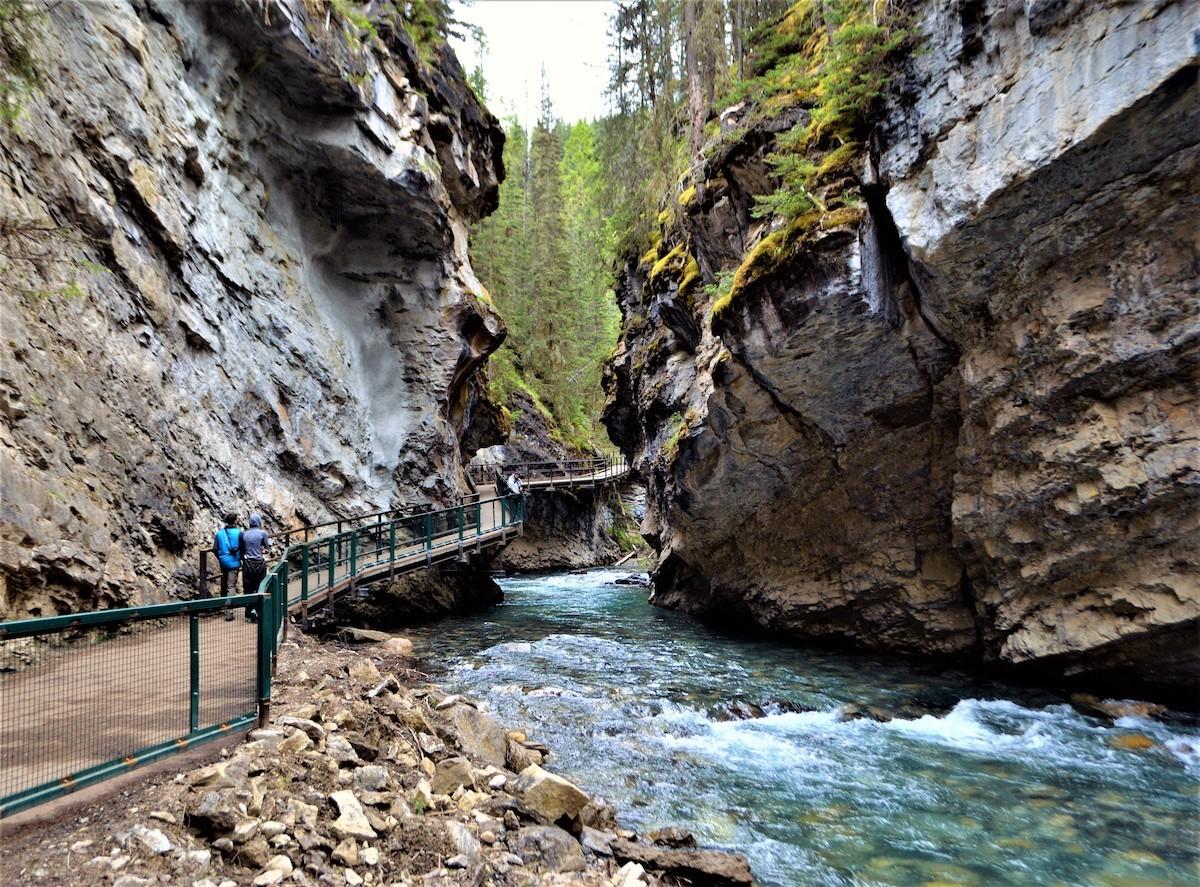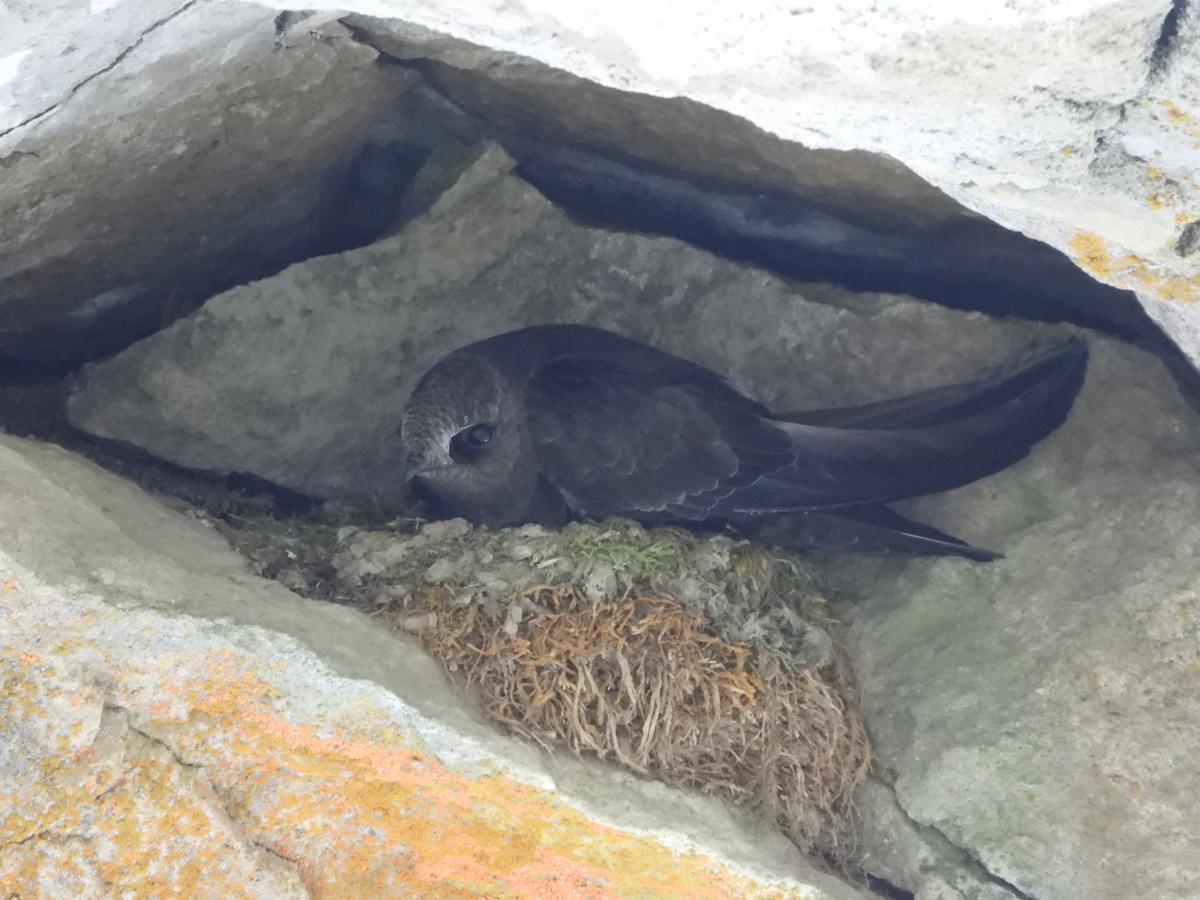
The railings along the Johnston Canyon Trail help protect nesting Black Swifts and vegetation/Parks Canada
To help protect endangered Black Swifts nesting in Johnston Canyon, Parks Canada is replacing and extending pedestrian railings on the Johnston Canyon Trail in Banff National Park.
This means that until late fall, the upper portion of the trail between the Lower Falls and Upper Falls will be closed and there won’t be any access to the Upper Falls. P1, the trail’s main parking lot, will be partially closed so visitors should consider taking Roam Public Transit (Route 9).
Railings encourage visitors to stay on the designated trail and refrain from trampling vegetation, Parks Canada says.
Black Swifts are the largest swift in North America, can live up to 16 years and may mate for life. They have black plumage, long and pointed wings and a unique notched tail. They often live in small crevices within caverns or cliff faces, where they build small, mossy nests and lay just one egg.
These birds survive where very few animals can, including in canyons of this Alberta park. But they have faced an estimated 50 per cent decrease in population since 1973. The bird was designated as an endangered species under Canada’s Species at Risk Act in 2019 and Parks Canada has made the protection of this species a top priority.
Johnston Canyon is one of only two known nesting areas in Banff. Parks Canada says the swifts will likely return annually to the same nesting sites, “but only if they have the space and security to nest without disruption.”

An adult Black Swift on its nest in Banff's Johnston Canyon/Parks Canada
To balance visitation with the needs of the Black Swifts, Parks Canada has:
• Issued a Restricted Activity Order from May 1 to November 15 to prevent off-trail access.
• Increased signs and markers reminding visitors to stay on the trail, and increased fencing to show visitors where they can go.
• Increased monitoring in the closed areas.
• Increased staff on site at the canyon and increased online information to educate visitors.
Five active Black Swift nests were confirmed in Johnston Canyon in 2021 — the highest number since 2004. Three nesting pairs were spotted in 2020, while only one or two active nests were recorded between 2005 and 2019. Up to 12 active nests were counted annually in the 1970s and early 1980s.
In Banff, Black Swifts and their nests are protected by law under the National Parks Act, the Migratory Birds Convention Act and Canada’s Species at Risk Act. People who disturb them and their occupied or unoccupied nests can be charged and fined.



Add comment